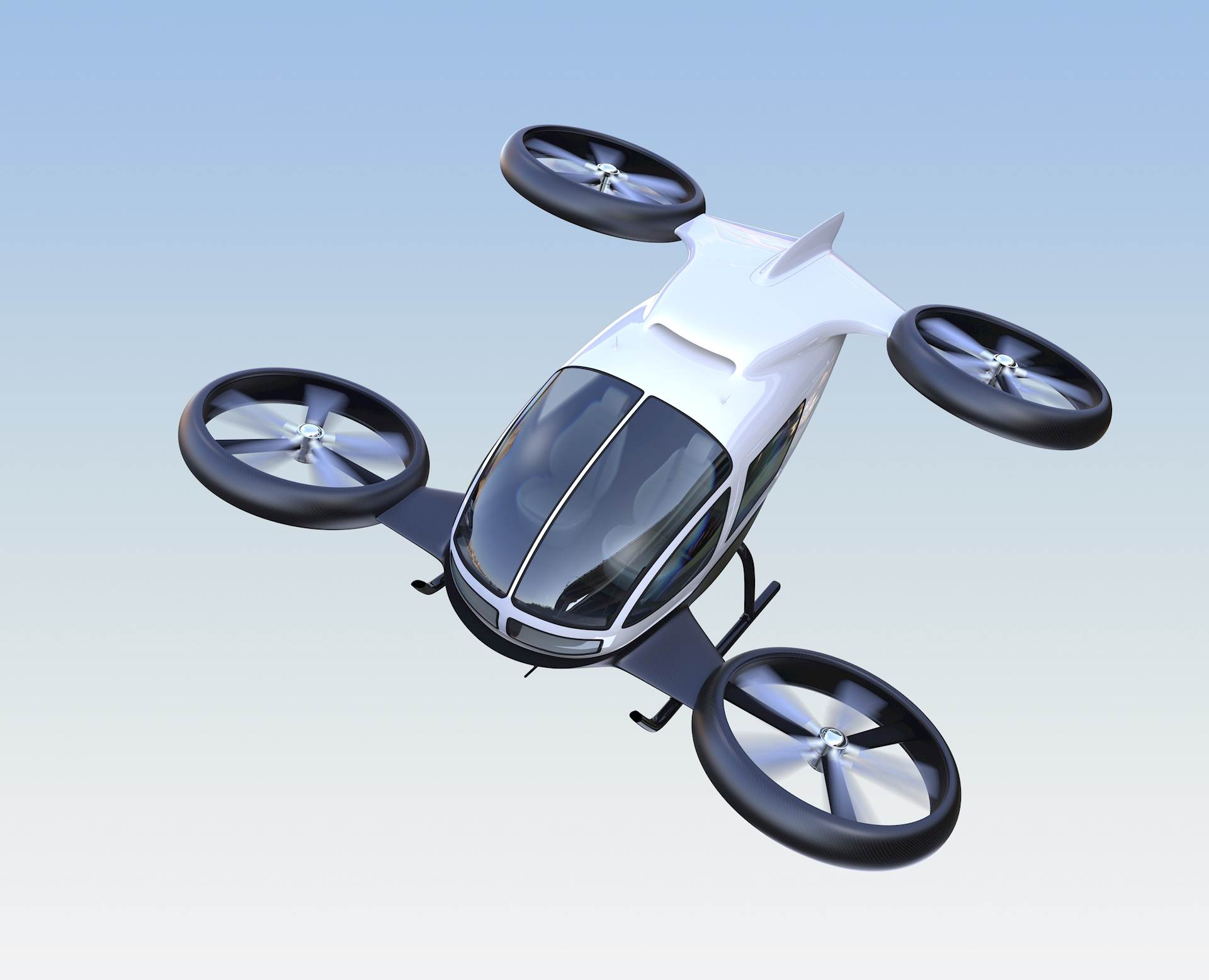“Seeing what everybody has seen and thinking what nobody has thought.” — Dr. Albert Szent-Gyorgyi
By now, you likely have noticed a flurry of news stories about urban air mobility (UAM), advanced air mobility (AAM), electric vehicles (EVs) and electric vertical take-off and landing (eVTOL) aircraft. In fact, several aircraft manufacturers are on the way to advancing the idea of AAM and eVTOL, with Federal Aviation Administration (FAA) support and the imminent certification of new aircraft. At the same time, the U.S. government has an ambitious goal to make half of all new vehicles sold in 2030 zero-emissions vehicles, including battery electric, plug-in hybrid electric and fuel cell electric, according to an Aug. 5, 2021, White House executive order. How will this affect your airport and your long-term planning for capital projects and funding?
At Hanson, our team is already working on various efforts to keep abreast of these innovations and consider them in practical planning for our clients. In today’s dynamic technological environment with changing market demands accompanied by significant federal and state investments in modern improvements, airports must be ready to adapt.

Electric battery evolution
UAM and AAM are well presented and explained in the FAA NextGen Office’s “Concept of Operations, Version 1.0.” In this document, the FAA considers how the evolution of electric battery technology has allowed the development of new aircraft that improve safety and reduce noise and operation costs. In essence, this is an evolving mode of transportation that will affect airports, especially smaller airports that may need support facilities as the private market expands.
New eVTOL aircraft are already being developed. Some manufacturers to watch include Airbus, Archer, Beta, Lilium, Dufour, Honda, Hyundai, Joby, Regency and Volocopter. Some of these new aircraft companies are also working toward charter operations on their own, with at least one nearing FAA Part 135 certification this year. The newly formed companies have also begun pilot training agreements with well-known companies so the regulatory requirement for a pilot-in-command may be met (at least, in early versions). While the pilots most likely will be commercial rated at first, a specialized pilot or even artificial intelligence may be next.
EV-friendly airports needed
On the ground, EVs are expected to increase from about 11 million cars and trucks on the road worldwide (2020) to 145 million in 2030, an increase of more than 1,200%, as reported by The Guardian on April 29, 2021. To keep pace with demand, automakers aim to boost EV sales to 40% to 50% of their total sales by 2030, according to an Aug. 4, 2021, article by The Wall Street Journal. If the predictions are correct, not only will infrastructure at airports need an EV-friendly boost, but so will power grids and electric support equipment. In addition, the formulas for calculating taxes on vehicle use will have to evolve from a gasoline model to an electric car registration fee or cents-per-mile model. Perhaps our dependency on global positioning systems and internal navigation systems will be the way to ensure a funding source for capital development in these areas.
Getting ahead of the changes
Each of these forward-thinking changes are coming in one form or another, and we may also see rapid advances in autonomous vehicles and the expanded use of ridesharing companies such as Uber. These advances are already affecting terminal building design, access road development, parking lot planning, airport usage fee collection, contract negotiations, budget preparation and other areas. Financially, the reduction in expected revenues will not necessarily be offset by projected increases in passenger traffic. In addition, depending on your airport’s location and demographics, the technology is advancing so quickly that design efforts might become obsolete before the capital improvement comes to fruition. Airports that think ahead will be airports that succeed.
Eric Menger is a business development manager in Hanson’s aviation market who can be reached at emenger@hanson-inc.com.
Aviation History Quick Hit
On this day in 1913, pilot Bernetta Miller was temporarily blinded while trying to set a new women’s altitude record when her oil flow indicator malfunctioned. She managed to land safely in New York despite the incident.